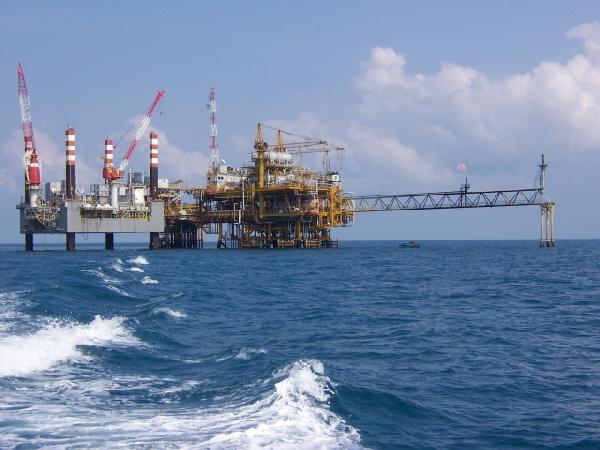Using Big Data To Boost Oil Industry

Digitalization has found tremendous applications in oil and gas exploration. Commonly termed, “Digital Oil Fields” some of the biggest oil and gas companies of the world have developed their own versions, for example, Chevron has the ‘i-field,’ British Petroleum or BP calls it ‘Field of the Future,’ and the Royal Dutch Shell Company has termed it ‘Smart Fields.’ Chevron estimates suggest 8 percent higher production rates and 6 percent higher overall recovery from a “fully optimized” digital oil field.
Indian oil companies need to leverage this cutting-edge technology to strike new ground and also to enhance productivity from the existing wells. Oil and gas companies leveraging Big Data Analytics have 65% more chance of outdoing competition, according to a survey by Deskera, a leading global cloud provider that has its own armory of Big Data tools. Utilized appropriately, Big Data along with Analytics could result in production improvement by 6–8%.
Insufficient Oil and Gas production in India
India is on the brink of an energy crisis. Millions of people in India have no access to electricity, with more than 400 million people going powerless. Currently, India’s depends heavily on coal with 67% of power generation coming from thermal resources. Coal is the mainstay but its production is insufficient and depleting fast. Most coal sources are known and are nearing exhaustion. India is the world’s fourth biggest importer of crude oil. Domestic production of natural gas has in fact decreased in recent years. The only hope is acceleration in the discovery and tapping of oil and gas. But Indian companies have not been able to keep pace vis-à-vis state-of-the-art technology.
What is a digital oil field?
‘Digital oil field’ or ‘smart oil field’ represents tools and initiatives relying on use of advanced and specialized software along with data analysis techniques to enhance productivity and profitability of energy companies, for the enhancement of operational efficiency, optimization of production, data integration and automation of machinery and workflow.
Global oil and gas companies leveraging Big Data Analytics
Although Big Data Analytics may seem new to many, of the few industries which have been familiar with the concept and have worked on it is the oil and gas exploration sector. In fact, the sector has been leading innovations in data science. As natural resources continue to shrink markedly, there is break-neck competition among oil companies to discover potential sites and find ways and means to enhance productivity. Energy companies are gathering increasingly greater amounts of data in trying to find out what lies beneath the earth’s surface and devising ways to extract it. They have been leveraging seismic software, visualization tools and other digital technologies.
Availability of faster and cheaper sensors yielding massive volumes of data
With the manifold increase in affordable sensors that can collect and transmit data coupled with new Analytics tools and advanced storage capabilities, new possibilities continue to emerge, helping energy companies capture increasingly more detailed data on a real-time basis at lower costs and from previously inaccessible areas—all aimed at improving oil extraction. The industry has for been using sensor data captured from thousands of subsurface oil wells in order to monitor oil assets. Better Analytics can improve the methods through which oil companies manage the entire process of drilling and connecting a well. This helps in reducing lag time and lowering the number of wells in process at a time. For example, transmitting microseismic 3D imaging through fiber optic cables has the potential to enhance new well delivery performance.
Data integration reducing technical risks and saving lives
Integrating this data into operations substantially improves visualization and calibration capabilities, thus, reducing technical risks. Big Data and Analytics can help in monitoring pipelines and equipment and also allow for a more predictable and precise approach to maintenance. For instance, sensors could indicate when a piece of equipment comes under unusual stress, allowing personnel to carry out interventions or preventive shutdowns so that accidents or spills could be avoided.
New Big Data tools improving production data collection and analysis
Oil and gas companies can utilize Big Data Analytics technologies through tools like the MapR Converged Data Platform to manage, collect, and analyze drilling, seismic, and production data. Oil majors can use this data for new insights that help increase production and drilling performance while foiling environmental or safety issues. In addition, such technology can help petroleum companies capitalize on Big Data and Analytics to optimize business operations, reduce costs, and increase competitive edge.
Digital India initiative incomplete without digital oil fields
The government will have to ensure that the technology sitting with the international energy firms is transferred to Indian oil companies. They would not be able to do it on their own. On the other hand, oil and gas companies need to invest heavily in research and development in terms of technology and software so that they can keep pace with the growing energy needs of a Digital India. It’s times they started leveraging new-age technology such as Big Data and Analytics.
Author: Muqbil Ahmar Source: CXOToday

Kalyan Banga226 Posts
I am Kalyan Banga, a Post Graduate in Business Analytics from Indian Institute of Management (IIM) Calcutta, a premier management institute, ranked best B-School in Asia in FT Masters management global rankings. I have spent 14 years in field of Research & Analytics.












0 Comments